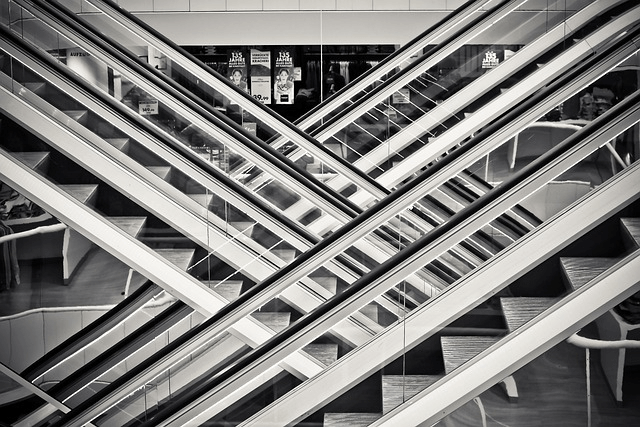
The Metro Manila retail sector has long been robust in the Philippines. From a physical mall space to a tiangge (hello, Divisoria!), one will indeed find what they want, some for low prices. However, the COVID-19 pandemic dealt a heavy blow to the retail sector, forcing businesses to adapt rapidly to survive, with some mall operators unable to recover at all.
As Metro Manila now embarks on its journey to recovery, there is a silver lining that extends beyond the retail sector. The retail sector’s growth resurgence promises benefits to others, such as the real estate market, in numerous ways.
Evolving Retail Landscape and Consumer Demand
The Philippine retail sector has experienced a paradigm shift with the convergence of online and offline shopping experiences. The pandemic accelerated the adoption of e-commerce, but it also underscored the importance of physical mall spaces as experiential retail hubs. The desire for in-person shopping experiences, especially among young shoppers, has reinforced the value of physical mall space and activity centers in key business districts.
As consumer confidence in mortar mall spaces improves and demand for these outlets increase, real estate developers can leverage this trend to create dynamic retail environments within central business districts, thereby enhancing the attractiveness of their properties.
Real estate developers can collaborate with mall operators to secure spaces for new retail ventures. This collaboration with mall operators seizes the scene and allows developers to tap into the expertise of mall operators, leveraging on their connections and knowledge of the retail market itself. Working together to compel mall operators, they can identify and secure the best locations for new retail establishments.
These partnerships between real estate developers and mall operators also benefit foreign and domestic retailers planning to expand their presence by visiting physical malls in major business districts in Metro Manila. Foreign and homegrown retailers can access high-traffic areas and prime locations within popular shopping destinations by securing mall spaces and teaming up with established mall operators. This facilitates their growth and enhances their visibility in the retail market here.
Securing Prime Retail Spaces
The retail sector in Metro Manila is expected to undergo significant expansion in the foreseeable future, with the projected mall space absorption, creating a pressing need to acquire prime retail spaces. This mall and prime retail space requirement stem from the increasing demand for commercial areas that offer excellent visibility, accessibility, high-density retail, and foot traffic.
As the key players in the retail property sector, mall operators hold a pivotal position in facilitating the acquisition of these highly desirable spaces, particularly within which malls serve the prominent business districts of the city.
The recovery of the retail market after challenging times presents a favorable environment for collaboration between real estate developers and mall operators. This collaboration allows developers to leverage mall operators’ expertise and established networks to secure spaces for their new retail ventures.
By partnering with mall operators, developers can tap into their knowledge of the retail market and dynamics, improving consumer demand, customer preferences, and prime locations, enabling them to make informed decisions and secure optimal spaces for their retail projects.
The benefits of these partnerships extend to foreign and domestic retailers who aspire to expand their operations and establish a more substantial presence in key business districts in Metro Manila. Collaborating with selected mall operators provides foreign retailers planning them with access to high-profile and high-traffic areas within popular shopping destinations. This access significantly enhances their visibility, increases footfall, and improves the chances of success for their businesses.
Maximizing Mall Spaces
A mall space holds significance beyond a mere retail outlet. It is a multifunctional area that has the potential to generate recurring income for mall operators. In light of the recovery of the retail sector, mall operators are compelled to seize opportunities and explore ways to maximize their utilization. One practical approach is transforming traditional malls into dynamic activity centers and enhanced mall scene — offering more than just shopping.
By opening physical space and incorporating entertainment venues, dining options, and lifestyle experiences, real estate developers and mall operators can create vibrant destinations that cater to consumers’ evolving preferences.
These transformed malls become more than just places to buy goods; they become social hubs where people can gather, engage in leisure activities, and indulge in various experiences. This reinvention of malls aligns with consumers’ changing needs and desires, who seek a more holistic and immersive shopping experience.
The transformation of malls into multifunctional and experiential spaces enhances the overall value of real estate assets. By creating vibrant destinations that cater to various consumer preferences, developers and mall operators can differentiate their properties from competitors and attract tenants willing to invest in these prime locations. The recurring income generated from diverse offerings within mall spaces contributes to the financial sustainability and long-term profitability of real estate assets.
Boosting Residential and Commercial Real Estate
As the retail sector experiences a resurgence, with improving buyer confidence and purchasing power, there is a consequent rise in demand for both residential and commercial real estate. This shift in consumer behavior presents a valuable opportunity for developers to capitalize on the trend and drive growth in the property market.
One effective strategy that developers can employ is to leverage prime retail space and strategically integrate retail components into mixed-use developments. By incorporating retail stores within residential towers and commercial complexes, developers create a symbiotic relationship between the different features of the property. This integration enhances the convenience and desirability of these properties, making them attractive to investors and residents.
The presence of retail outlets within residential towers offers a host of benefits. It provides a convenient shopping experience for the residents, eliminating the need to travel far distances for daily necessities or indulgences.
This accessibility adds value to residential units, making them more appealing to potential buyers or tenants. Additionally, the availability of retail options within the same complex fosters a sense of community and promotes a vibrant and active lifestyle for the residents.
Furthermore, integrating retail components into mixed-use developments can positively impact property values and rental yields. Retail outlets within the complex increase foot traffic, contributing to a vibrant and bustling atmosphere.
This, in turn, adds value to the property and makes it a sought-after location for businesses and residents alike. The potential for higher rental income and increased property appreciation makes mixed-use developments with retail components an attractive investment opportunity for developers and property investors.
Foreign Investment and Retail Growth
Foreign retailers recognize the potential of the Philippine retail market’s growth and the increasing purchasing power of the population. As the country’s retail industry and market recover, more foreign retailers will likely invest in Metro Manila, seeking opportunities to establish a foothold in the region. This influx of foreign investment contributes to the growth of the country’s retail segment and sector and a substantial new supply that fuels the demand for prime real estate spaces.
Real estate developers can capitalize on this trend by catering to the specific needs of foreign retailers, fostering mutually beneficial partnerships that drive economic growth.
Conclusion
The Metro Manila retail sector’s recovery presents a golden opportunity for the real estate industry in the capital region. The interplay between the retail market, improving consumer confidence, the convergence of online and offline retail sectors, shopping, and online shopping, the country’s retail regulatory environment, and rising purchasing power create a conducive environment for real estate developers and investors.
By strategically aligning their projects with the evolving needs of retailers and consumers, developers can drive growth and innovation in both sectors, ultimately contributing to Metro Manila’s dynamic and prosperous landscape.


